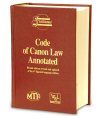"Same-sex marriage" in medieval canon law
Recently I came across a passage in a medieval canonical treatise, the Summa Aurea by Hostiensis (d. 1270), wherein the great lawyer paused, as it happens, to point out (at the risk of preaching to an audience who took such a truth for granted) that marriage can only exist between a man and woman, and one of each at that. How ironic that words penned by a canonist 750 years ago are more helpful to us today than they were to their original audience! Of course, Hostiensis went on to discuss other canonical aspects of marriage, but his brief observations that marriage is possible only between one man and one woman are, I think, useful to us who, many centuries later, are defending marriage against an appalling redefinition.
Preserving the clipped prose typical of medieval canonistics and omitting citations, I here offer my rough rendering of Hostiensis' thirteenth century text on marriage.
"What marriage is. The conjoining of a man and a woman holding to an individual manner of life; a mutual sharing with divine and human aspects. Marriage is between a man and a woman; two of the same sex cannot be married. For, in the beginning they were not created two men nor two women, but first a man and then a woman. A wedding therefore that is not a commingling of the sexes would not have within itself a sacrament of Christ and the Church. Marriage is also spoken of as being between a man and a woman in the singular, and not of men and women in the plural, for no one man can wed several women, nor can one woman wed several men."
Henricus de Segusio (Cdl. Hostiensis, c. 1200-1270), Summa Aurae [1253] una cum summariis et adnotationibus Nicolai Superantii (Neudruck der Ausgabe Lyon, 1537 / Scientia Aalen, 1962) 194 bis (b).









<< Home